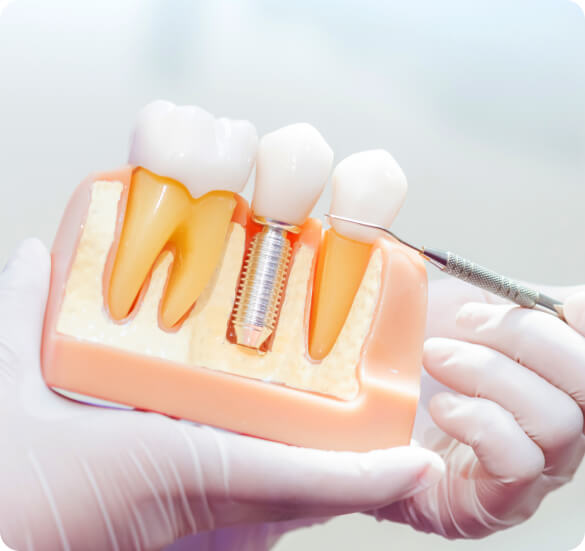What is a Dental Implant ?
The application known as dental implant or dental implant is the placement of artificial tooth roots made of titanium material compatible with the body instead of completely lost tooth roots. It is known that the best dental treatment method that replaces the tooth root is implant. It can be used to replace single teeth, multiple teeth or completely lost teeth. Thanks to its special structure, the implant placed in the jawbone behaves like the patient’s natural tooth roots and adheres to the jawbone over time. The patient has strong teeth that can be used for many years. Implants can be used for more than 20 years, lifelong if supported by careful oral care.


Implant Treatment How Long Does It Take?
Implant treatment consists of several stages and therefore takes longer than other treatment methods. Although the duration of treatment varies according to the patient’s bone structure and healing rate, it is between 2-7 months on average. The integration of the implant with the jawbone may vary depending on the patient’s bone health and external factors. For example, smoking during the treatment process may prolong this period and in some cases may cause the implant to fail. During the implant dental treatment, local anaesthesia is applied to the patient so that the patient does not feel pain. It is normal to feel slight pressure in the treated area during the application. The treatment process is supported with various painkillers. In addition, temporary prosthetic teeth are provided if requested by the patient.
Implant Treatment Who Can Have Implant Treatment?
Implant tooth can be done to anyone over the age of 18 who has completed bone development and has dental problems. People with single tooth or multiple tooth loss may prefer implant, which is a permanent solution. For this treatment, the jawbone must be in suitable conditions for the implant. The appropriate thickness and height of the bone where the implant will be placed is necessary for a successful implant. In cases where the bone is not suitable, bone treatment is applied if improvement is possible; if not, other treatments are directed.